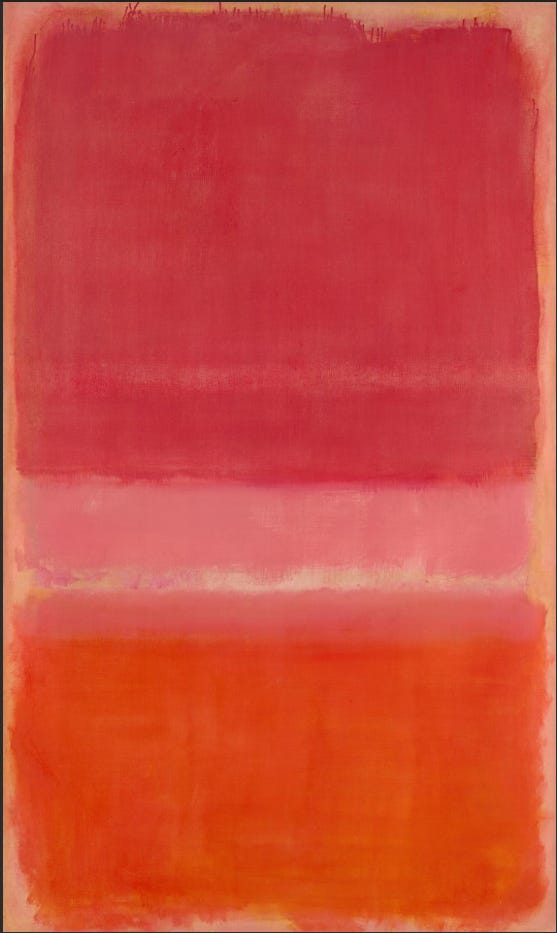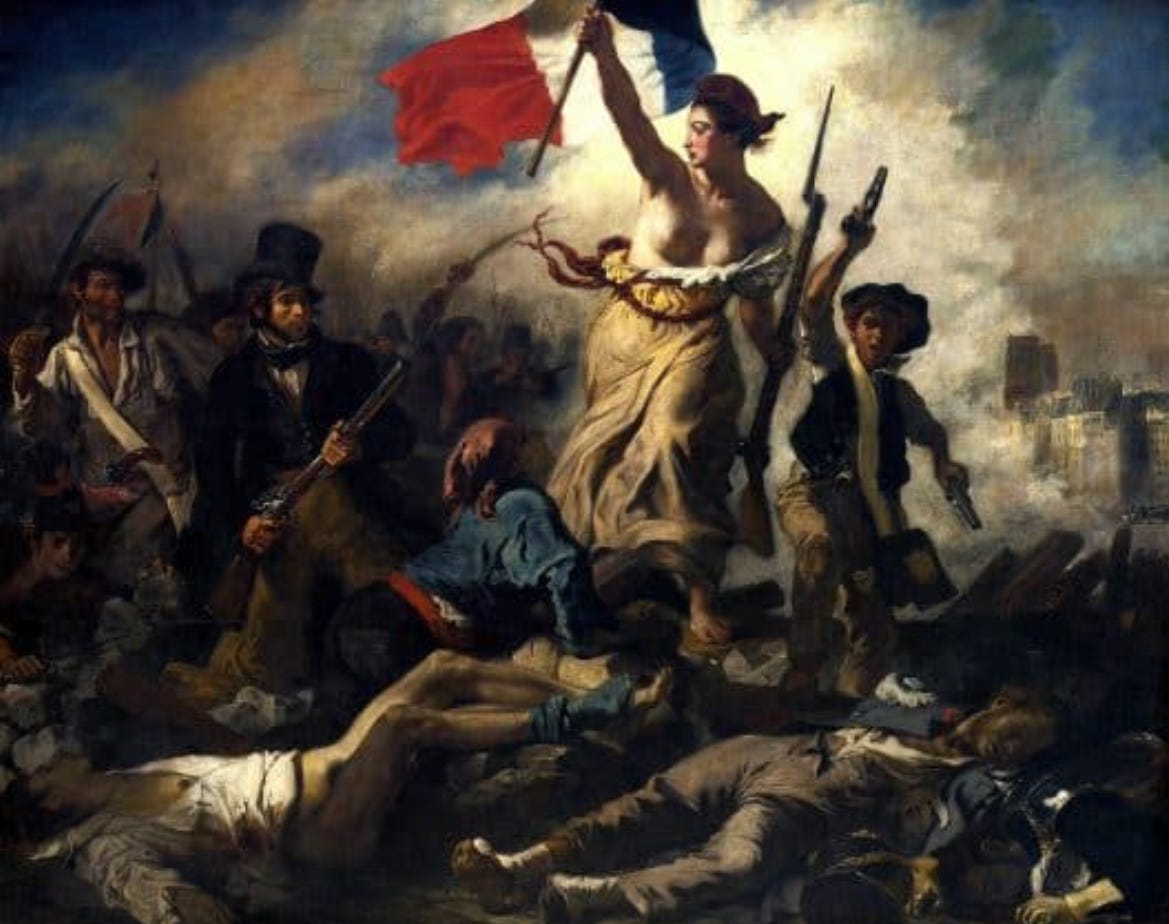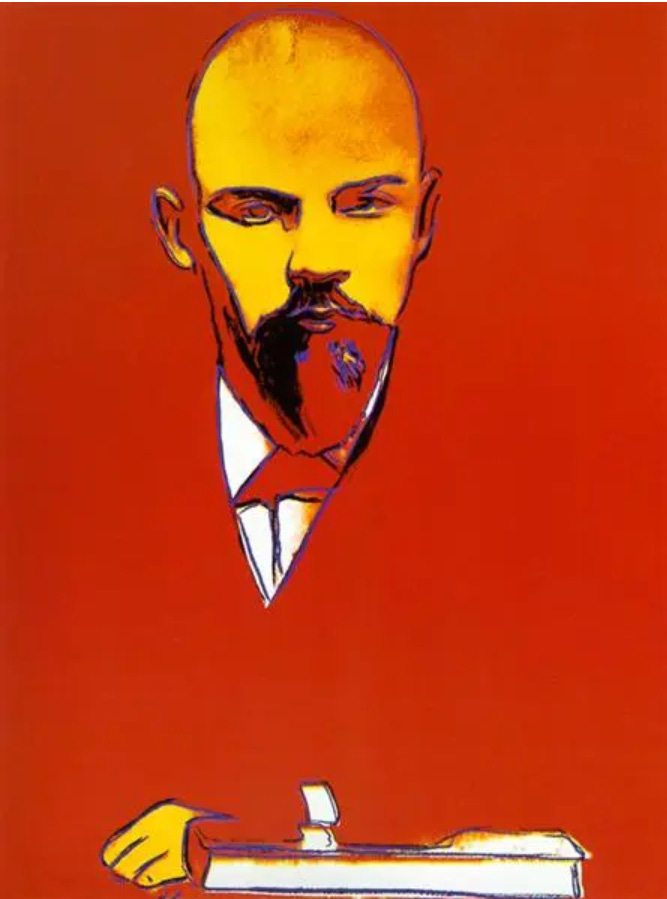Mark Rothko, famous for his Colour Field paintings, (sorry Susan L. - I know you hate them!) describes his works as full of content and brimming with ideas, while critics may call them shallow and lacking content. Born in Russia in 1903, some of his greatest influences were mythology and philosophy. He was a champion of self expression and revolutionary thought.
Colour Field artists, there are a few, claim that the purity of the colour evokes spiritual, psychological or meditative states in its audience with no distraction from form or mark.
What do you think?
And, before you dismiss the work, consider how long you may have taken over choosing just the right shade of a given colour for décor or fashion – colour impacts our lives at every turn!
Red is a very strong colour symbolising passion, love, and danger. Think Valentine’s Day roses, stop signs, and fire trucks. It’s also used in religious contexts to represent the blood of Christ and martyrdom. In other cultures it has different associations for example - in China, red is the colour of luck, happiness, and prosperity. It's worn at weddings, used in New Year decorations, and gifted as red envelopes (hongbao) filled with money. In India red symbolises purity, fertility, and marital bliss. Brides traditionally wear red saris, and the colour is associated with the goddess Lakshmi. In Japan red is linked to heroism and sacredness. Shinto shrines often feature red torii gates, believed to ward off evil. In parts of Africa, red can represent mourning and death, prompting organizations like the Red Cross to change their logo colours in certain areas. For Central African, Ndembu people, red is a symbol of life and health - warriors and the sick are painted red during rituals. In Russia the word for red (krasny) is closely tied to the word for beautiful (krasivyy). Red is seen as a symbol of beauty, honour, and celebration, and is deeply embedded in folk traditions as well as representing communism.
As we celebrate Bastille Day here in France, it's apt to look at
Liberty Leading the People by Delacroix. Here's a video link for more info on the painting - Delacroix, Liberty Leading the People
As Liberty, wearing her Phrygian cap, (or as I like to call it – Smurf hat), defiantly waves her tricolore, red dominating the whole scene, we may remind ourselves of the meaning of the French flag - Liberté (blue), Égalité (white), Fraternité (red).
The flag emerged during the French Revolution in 1789, inspired by the cockade (a sort of rosette) worn by revolutionaries: blue and red for Paris, with white added to represent the monarchy. It was officially adopted in 1794, with the current vertical arrangement standardized under the First Republic.
The tricolore represents the unity between the people and the monarchy-a visual reconciliation during the early revolution. Over time, it became a symbol of republican values, replacing royal standards and inspiring other nations’ flags (like Italy and Ireland).
The French flag isn’t just a national symbol-it’s a visual manifesto of France’s revolutionary spirit and enduring ideals.
While considering famous red works of art for this weeks SBC, Yeo's controversial portrait of King Charles comes to mind. We did discuss this in class when it was unveiled and there were many ideas about the artists choice of colour.
I've contrasted it with a work from nearly 4o years earlier – consider the importance of the colour in these works.
What do you think?
Your task this week is to look out for the colour red in your daily life. You may consider ;
Do you have any red clothes (or shoes Dorothy!) - if so why did you choose them and how do you feel wearing them?
What about bright red lipstick?
Where do you see red in advertising – find examples – tv adverts, magazines, shop signs and road signs etc - think about the impact the colour has on the product or message.
Make some colour notes in your sketchbooks and really interrogate your relationship with this colour.






